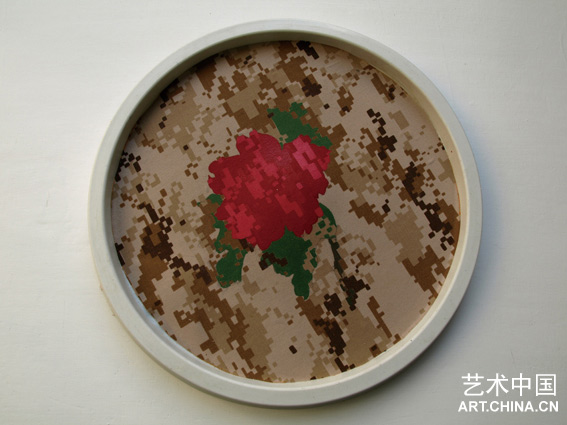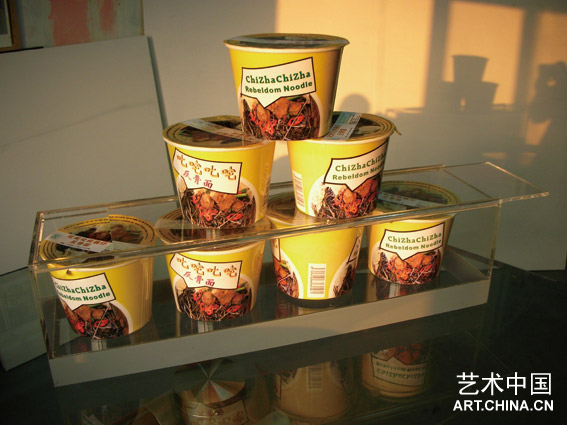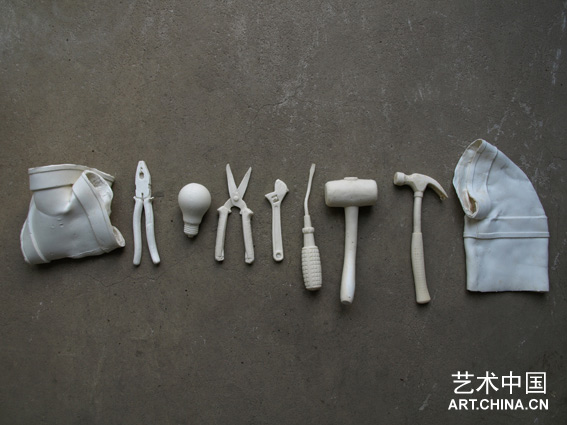|
物是:當(dāng)代藝術(shù)中的物主題
如果說,哲學(xué)源于驚異,那么最初的驚異實(shí)際上源自于一個(gè)問題“這是什么?”,“這”的更確切的含義指的是“這個(gè)東西”,即某物(物品、符號、身體……)。因此,可以說哲學(xué)源于——甚至根本上就是——“物是什么”這個(gè)問題,而對這個(gè)問題的回答也已經(jīng)對“我是什么”的回答。
對物的思考幾乎貫穿了整個(gè)哲學(xué)史,當(dāng)然在不同的階段,物有著不同的身份和定義,無法在此逐一詳述。從整體上而言,從古典時(shí)期的本體論哲學(xué)一直到啟蒙時(shí)期的主體性哲學(xué),物都是被派生、被宰制的客體,一直處在某種從屬結(jié)構(gòu)中。這種情形一直到尼采之后的哲學(xué)中才有所改變,物逐漸獲得了自身的決定性,伴隨著對形而上學(xué)的拆解,人們開始意識到了身體、能指、無意識的在場,也逐漸打破了建立主體形而上學(xué)的企圖。如果說哲學(xué)史的前半段一直是在建立一種主體的同一性哲學(xué)的話,那么后半段就是在借助于物的力量去質(zhì)疑、批判、顛覆這種同一性哲學(xué)。
在藝術(shù)史中,也可以發(fā)現(xiàn)這樣一種現(xiàn)象,即從現(xiàn)代主義以來,藝術(shù)史的歷次變革與調(diào)整或多或少、或隱或顯地與對物性的關(guān)注與投入有關(guān),對這一現(xiàn)象的梳理足以形成一部藝術(shù)史專著。但是在這里,我們只能嘗試性地在這一主題下討論一部分中國藝術(shù)家及他們的作品,而之所以選擇這些藝術(shù)家,是因?yàn)樗麄兊淖髌房梢砸l(fā)以下幾個(gè)與“物”相關(guān)的問題:物是什么,物如何出場,這種出場與藝術(shù)有什么關(guān)系,物與人、物與社會的關(guān)系是什么,這些問題都可以歸納到對物性(Thinghood)的抽象思考與具體呈現(xiàn)上。
時(shí)間:2008-12-20—2009-2-8
地點(diǎn):北京市朝陽區(qū)酒仙橋路4號798藝術(shù)區(qū)E06瑪吉畫廊
開幕酒會:2008-12-20 16:00
主辦:瑪吉畫廊(北京)
策展人:鮑棟
項(xiàng)目負(fù)責(zé):艾思
藝術(shù)家:鄧猗夫、郭鴻蔚、蔣建軍、金江波、金石、劉窗、楊心廣、蘇文祥、王光樂、王思順
[專稿] 瑪吉畫廊——物是

Thinghood: Object-related Themes in Contemporary Art
If we say that philosophy was born of astonishment, then the earliest astonishment was born of the question, “what is this”. The meaning of “this” is more accurately described as “this thing”, i.e. things (objects, icons, bodies…). For this reason, we could say that philosophy is rooted in – essentially is – the question of “what this thing is”, and the answer to this question is also the answer to “what am I”.
Thinking on things has permeated the entire history of philosophy, though of course in different stages, things have had different identities and definitions, which for practical reasons we will not delve into here. Overall, from the ontological philosophy of the classical era to the subjective philosophy of the enlightenment, things have been derived and dominated objects, always a subordinate construct. This state of affairs did not change until after the philosophy of Nietzsche, when things began to gain their own decisiveness. With the disassembly of metaphysics, people gradually became aware of the presence of the body, signifiers and the unconscious, and eventually thwarted the schemes of subjective metaphysics. If we say that the first half the history of philosophy was about establishing a subjective unified philosophy, then the second half has been about using the power of things to cast doubt on, criticize and subvert this unified philosophy.
In art history we can also see such a phenomenon in that since modernism, all of the transformations in art history have more or less been about shifting the focus to thinghood; there is enough on this subject in art history to write an entire book. Here, however, we can only dabble a bit in using this theme to discuss certain Chinese artists and their works. The artists under discussion have been chosen because they can open up the following issues regarding “things”: what things are, how they appear, what relation their appearance has to art, and what the relationships are between things and man and things and society; all of these issues can fall under abstract thinking on thinghood and the specific presentation thereof.
Dates: December 20, 2008 - February 8, 2009
Venue: Magee Art Gallery, E06, 798 Art District, No.4 Jiuxianqiao Road, Chaoyang District, Beijing
Opening: 4pm, December 20, 2008
Presented by: Magee Art Gallery | Beijing
Curator: Bao Dong
Project Manager: Sun Aisi
Artists: Deng Yifu, Guo Hongwei, Jiang Jianjun, Jin Jiangbo, Jin Shi, Liu Chuang, Yang Xinguang, Su Wenxiang, Wang Guangle, Wang Sishun



|

